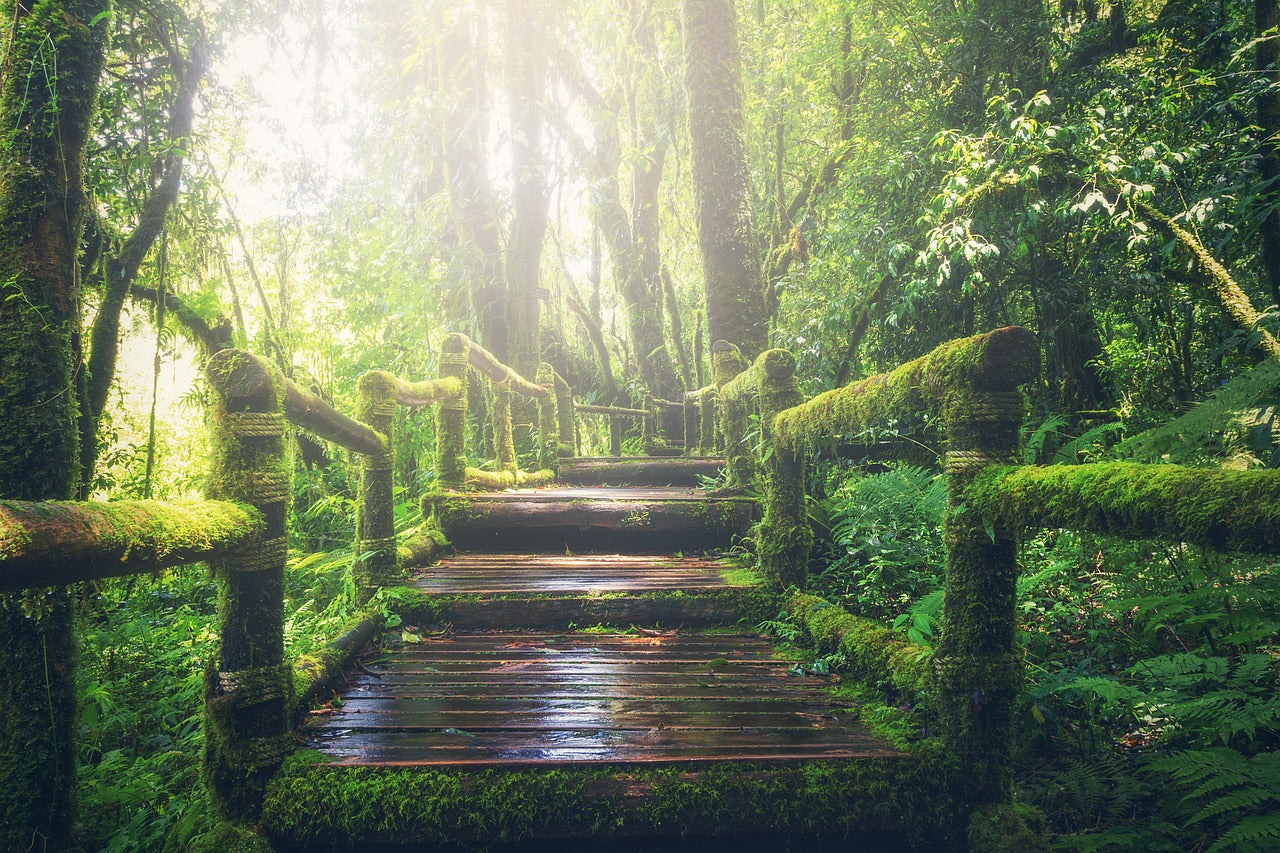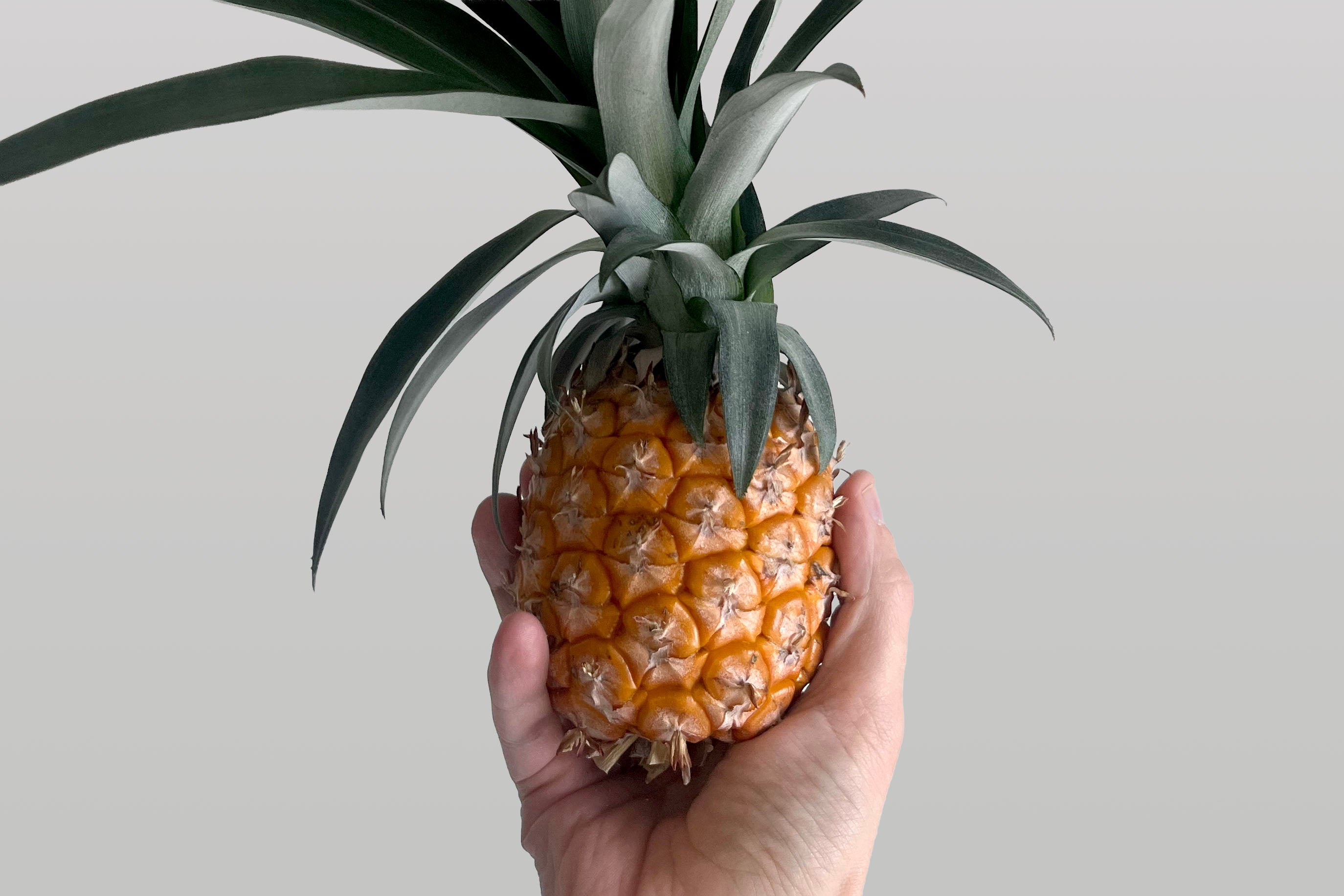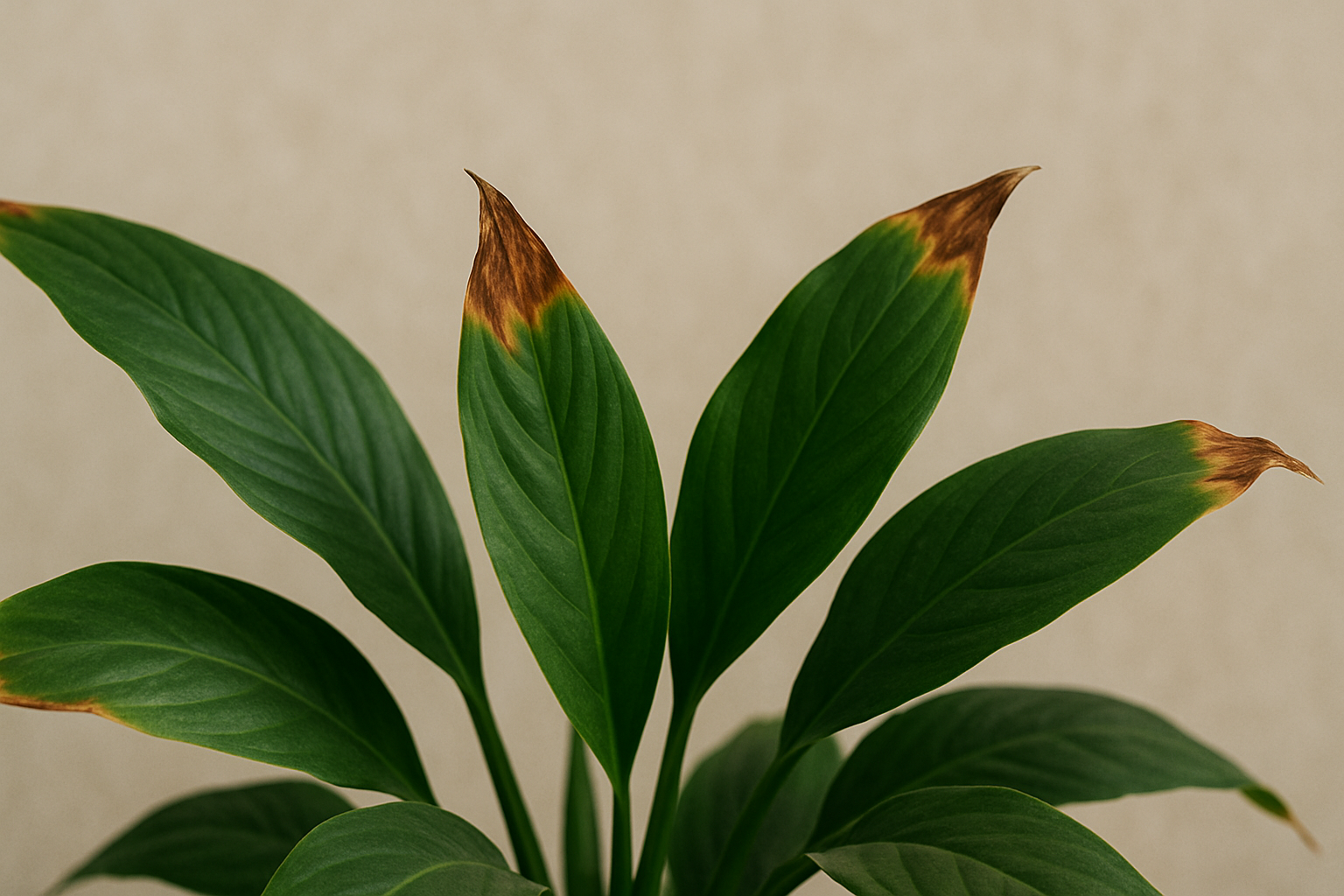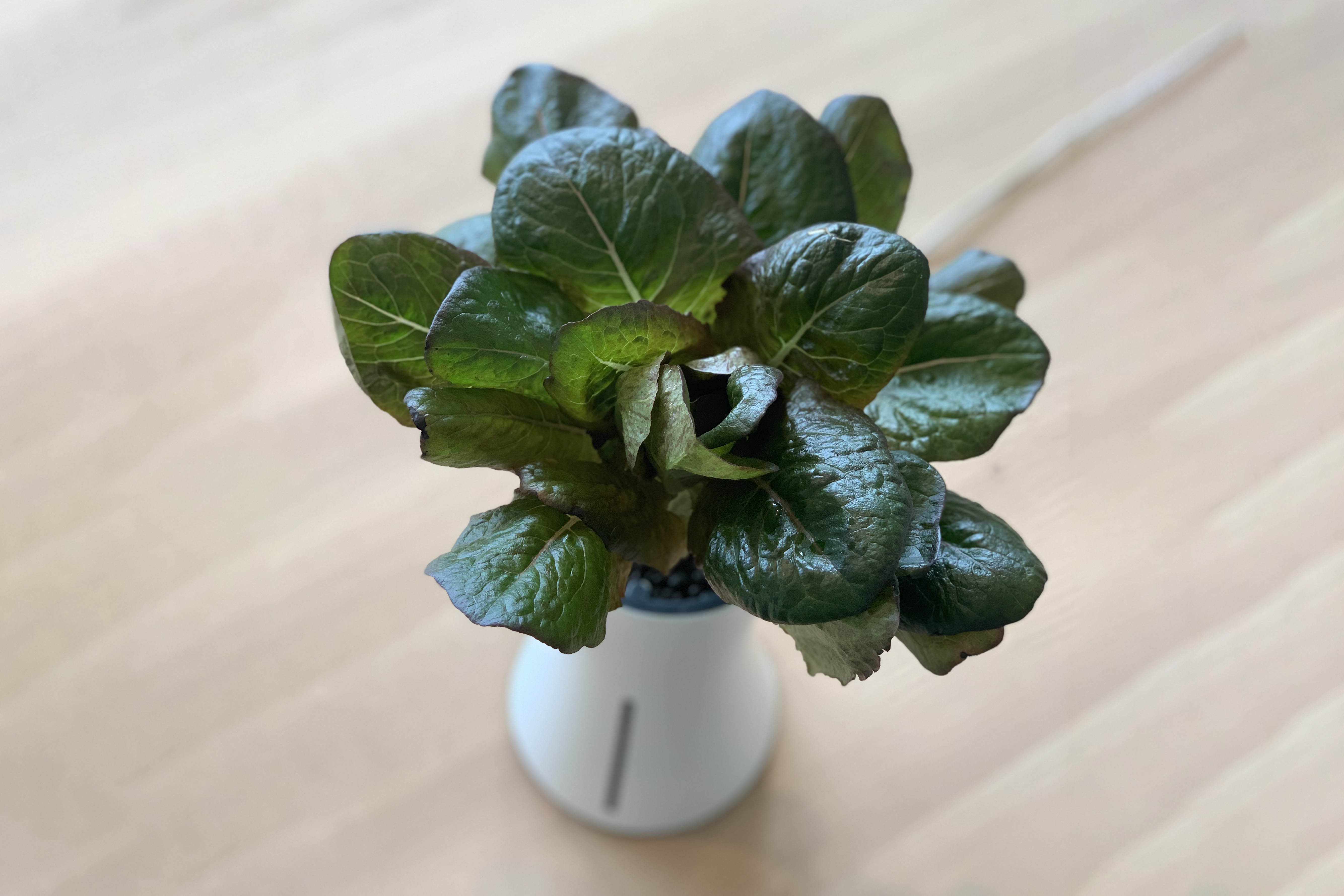Varför odlar vi växter?

Det borde inte komma som någon överraskning att vi som tillverkare av botanium är fascinerade av växter.
Efter att ha odlat hundratals växter, slutar det aldrig att förvåna mig hur något som ett litet frö kan växa till en stor växt. Inbyggt i detta lilla frö finns instruktioner för att bygga stjälkar, löv, blommor och frukt - med endast luft, vatten och ett par mineraler och driva denna process med ljus. I denna tid kan vi tro att det mesta livet är dokumenterat, men det finns fortfarande 2000 nya växtarter som upptäcks varje år.
Växter är extremt mångsidiga och kan hittas i de mest extrema miljöer. Sättet de lever, sprider sig och samexisterar tillsammans med djur är imponerande, med tanke på att de inte har ett centralt nervsystem som djur. Växter är inte så passiva som de verkar - de kan äta insekter, skjuta sina frön på långa avstånd, manipulera djur för att skydda dem, svara på beröring och till och med härma utseendet på andra växter i deras närhet.

Det är fascinerande, mystiskt och vackert hur sådan intelligens kan existera utan hjärna. Eftersom en växt är en decentraliserad organism kategoriseras den bättre som en koloni av växtceller än som en "växtindivid". Egentligen kan man hävda att varje enskilt rothår och varje gren på en växt är en annan växt, eftersom de agerar oberoende utan något gemensamt mål för hela växten. Det är därför du kan skapa en klon genom att skära av en gren och släppa in nya rötter i ett glas vatten eller en botanium.
Växter är mycket känsligare för sin omgivning än vad djur är. Rottoppen av en växt har kapacitet att detektera 20 olika fysikaliska och kemiska parametrar inklusive gravitation, ljus, magnetfält, patogener och mer. Detta är vettigt eftersom en växt inte kan gå någonstans och den verkligen behöver anpassa sig till sin omedelbara miljö.
Växter för mat och som luftrenare
Som människor är vi helt beroende av växter. Även om du äter enbart kött, skulle det inte finnas något kött om det inte vore för växternas unika förmåga att använda solens energi och omvandla den till något som djur kan leva på. Minst 80 % av biomassan på jorden består av växter, och tillsammans med alger och cyanobakterier är de de enda organismerna som kan använda fotosyntes. I denna process att omvandla koldioxid, mineraler och vatten till kolhydrater, fett och protein skapar de också syret vi andas.

Den vanliga murgrönan
NASA har bedrivit forskning om växters luftrenande förmåga och har upptäckt att deras rötter kan rena luften från föroreningar. [1] Murgrönan kan absorbera 90 % av all luftburen bensen (en vanlig cancerogen inomhus) i ett rum på bara 24 timmar. Förvänta dig dock inte att en enda krukväxt ska rensa all din luft - det beror mycket på rummets storlek, ventilation och andra faktorer. Varför NASA forskar om växter är helt enkelt för att de inte är något sätt att utföra långväga rymdresor utan att ta med växter ombord.
Växter för medicin och berusning
Växter ger inte bara mat och syre, de påverkar oss på många fler sätt. Människan har länge använt växter för medicin och för berusning. Även om en växt som cannabis kan sänka smärta [2] , vitlök kan sänka blodtrycket [3] och att Echinacea kan minska längden och symtomen på förkylning [4] , finns det en tendens att kraftigt överdriva effekten av örtmedicin . Det finns till exempel inga starka bevis för att några växtbaserade läkemedel botar cancer. Och huskurer, som att komplettera med äppelcidervinäger mot artrit, har vanligtvis inget vetenskapligt stöd. Det verkar som att en i första hand växtbaserad kost kan förebygga många västerländska sjukdomar, men att växtbaserade läkemedel har en mycket liten effekt när man väl blivit sjuk.

Två av världens vanligaste droger: tobak och kaffe
Växter kan på mer direkta sätt påverka vår subjektiva upplevelse av världen, som i fallet med vanliga humörändrande ämnen som tobak och kaffe. Några mindre vanliga exempel, som har en lång historia av rituell användning, är peyote, ayahuasca och salvia divinorum, som alla innehåller kemiska föreningar som skapar kraftfulla hallucinationer och förändringar i humör och beteende hos människor som får i sig dem. Syftet med dessa kemikalier verkar vara ett skydd mot patogener, insekter och djur. De är tänkta att avskräcka växtätare, men hur dessa växter påverkar hjärncellsreceptorer hos däggdjur har istället gett människor en anledning att odla dem. Som också är fallet med kaffe, te, tobak och cannabis, får dessa växter alltså en enorm reproduktiv fördel gentemot andra växter tack vare deras speciella relation till människor.
Växter för välbefinnande
Som art formas vi av vårt beroende av växter. Intressant nog är det mänskliga ögat mest känsligt för gröna nyanser, vilket är vettigt om man betänker att vi utvecklades på savannen - inte i en miljö bestående av betong och asfalt. Att se fler nyanser av grönt gjorde det lättare för tidiga människor att hitta eller undvika specifika typer av växter.
Vi dras naturligt till växter eftersom de får oss att må bra. En studie [5] fann att patienter som återhämtade sig från operation hade lägre värderingar av smärta, ångest och trötthet när de placerades i rum med växter. Patienterna släpptes tidigare, eftersom deras återhämtning gick snabbare.

Interaktion med inomhusväxter har också visat sig minska stress [6] och förbättra kognitiv förmåga och koncentration. [7]
Varför vi växer
För cirka 12 000 år sedan förstod människor hur man systematiskt odlar växter för mat, och världen förändrades på grund av det. Grödor som majs, vete och ris har spridits över hela världen på grund av jordbruket. Varför människor fortfarande dras till att odla växter, även om vår överlevnad inte längre beror på det (eftersom väldigt få odlar all sin mat), kan bero på att vi har en inbyggd koppling till växter som ger dem mening bortom matkällor eller humör -förändrande ämnen.
De skapar vårt syre, förändrar vårt humör och förbättrar vårt välbefinnande med bara deras utseende och närvaro. Du kan argumentera att om du vill ha växter bara för dess dekorativa egenskaper, varför inte skaffa en konstgjord växt? Vissa konstgjorda växter är otroligt lika riktiga växter, och om du inte rör vid dem eller undersöker dem noga är det nästan omöjligt att se skillnad.
Den viktiga skillnaden är dock sammanhanget, vetskapen att att odla en liten växt i ditt hem är som att ha en liten bit av naturen som är beroende av dig - en sorts Tamagotchi - och du blir investerad i den, eftersom du har tittat på det växer upp lite varje dag. Det är något som är levande, det har celler som du, och det behöver vatten precis som du. Det är lika beroende av koldioxiden vi andas som vi är beroende av syret den producerar. Och när man tänker på detta kan man känna en speciell koppling till växter och naturen i allmänhet. Tänk bara på att växter och människor alla hade samma förfader för miljarder år sedan. Hälften av våra gener finns faktiskt också i bananer!

Vi människor har skapat inomhusmiljöer som oftare än inte är lika karga som öknen (å andra sidan har öknar faktiskt växter). För vår hälsa och välbefinnandes skull måste vi ta tillbaka växter till vårt dagliga liv.
När fler människor flyttar från naturen till städerna behöver naturen flytta in hos oss.
Referenser:
[1] https://ntrs.nasa.gov/search.jsp?R=19930073077
[2] https://www.ncbi.nlm.nih.gov/books/NBK224384/
[3] https://www.ncbi.nlm.nih.gov/pubmed/8942410
[4] https://www.ncbi.nlm.nih.gov/pubmed/14657066
[5] https://www.ncbi.nlm.nih.gov/pubmed/19715461
[6] https://www.ncbi.nlm.nih.gov/pmc/articles/PMC4419447/
[7] Nancy Wells, Cornell College of Human Ecology, University of Michigan (2002)





Great article!
Minor point, but something that stuck out, is the use of the Swedish term “cancerogen.” This term hasn’t made its way into English (yet), so the more appropriate term to use is “carcinogen.”
Lämna en kommentar